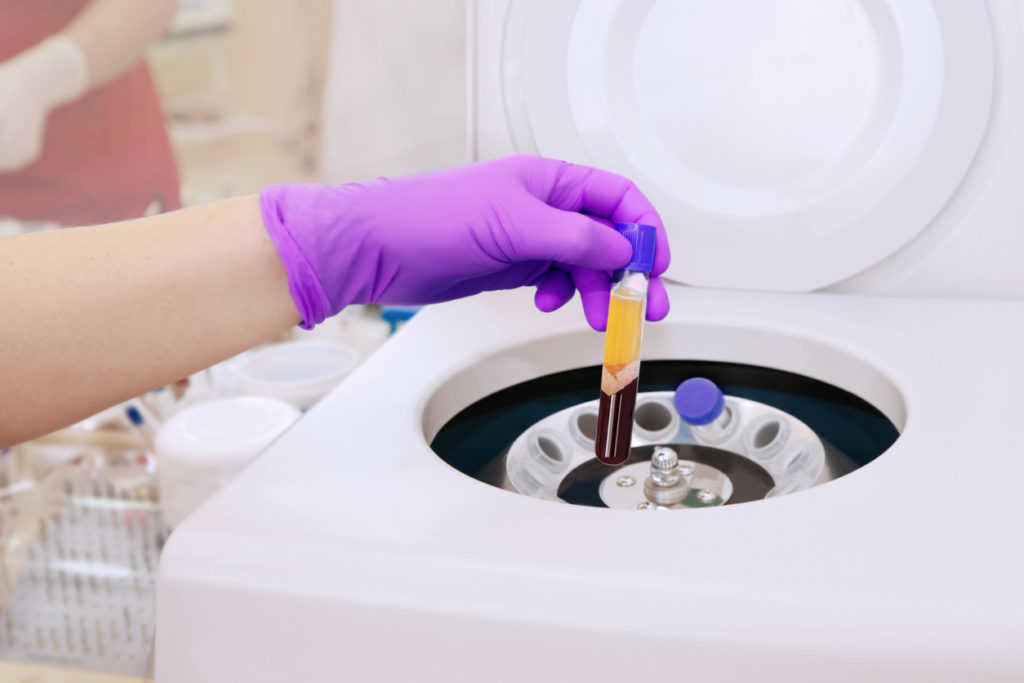
Interventional pain management specialists favor platelet-rich plasma (PRP) therapy, as it’s a safe, effective way to manage chronic pain and speed healing. Whether you’ve had surgery, damaged cartilage in your knee, or desire to feel and function better without surgery, FDA-cleared PRP therapy could be a viable treatment option. Learn more about this innovative treatment, as well as its benefits and side effects.
How PRP Therapy in Wilmington, DE, Works
Platelet-rich plasma (PRP) therapy involves injecting a patient’s own blood-clotting cells into an area of injury or pain. To prepare the shot, the provider draws a blood sample and spins it in a centrifuge, separating platelet-rich plasma from the rest of the blood’s content. The plasma is then injected into the problem area, giving it a surplus of platelets to help improve damage.
In fact, PRP injections contain a 95 percent concentration of platelets–many times higher than what normally circulates in your bloodstream. After the injection, the platelets supply growth factors to the area, which:
- Relieve acute, chronic, and post-surgical pain
- Reduce inflammation (a characteristic of osteoarthritis)
- Speed healing
- Generate growth of new, healthy tissue
Generally, patients receive a series of PRP injections. Your provider will determine how many shots you should receive, and at what intervals, to maximize therapeutic effects.
Uses of PRP Therapy in Wilmington, DE
Platelet-rich plasma therapy helps patients of all ages feel better, heal well, and improve musculoskeletal function. Some providers use PRP injections to stimulate dormant hair follicles to produce new growth. Plus, the therapy can have aesthetic skin effects when properly utilized in a dermatology care plan.
Platelet-rich plasma (PRP) therapy can manage the discomforts of:
- Plantar fasciitis in the arch of the foot and heel
- Tennis elbow, jumper’s knee, and other sports-related tendon issues
- Jaw and shoulder surgeries
- Osteoarthritis pain and limited range of motion
- Bursitis
- Tears in the knee cartilage (meniscus)
- Rotator cuff tears in the shoulder
- Back pain, especially in the lumbar region (lower back)
While relief can be substantial, it is usually not permanent. That’s why patients work with their providers in a multi-faceted pain management plan, maximizing the many challenges associated with persistent pain.
Side Effects of Platelet-Rich Plasma Therapy
PRP therapy helps many people avoid the long recovery times, incisional pain, and other problems associated with back, shoulder, knee, and other kinds of surgery. In fact, as patients receive their injection regimen, there is virtually no downtime, no allergic reactions, and no rejection problems, because the PRP is taken from the person’s own body.
Patients receive the shots in their doctor’s office and can then go about their usual routine. However, minor issues may develop with some individuals. These side effects may include:
- Minor bleeding
- Infection
- Pain at the injection site (the doctor may apply an anesthetic first and then give the PRP injection)
- Mild swelling, redness, and skin discoloration (these resolve quickly)
PRP Therapy at Delaware Back Pain & Sports Rehabilitation
Our team of interventional pain management specialists, physical medicine doctors, and chiropractors help people eliminate or manage pain, maximizing their musculoskeletal function and overall wellbeing. PRP therapy is one of our most innovative treatments.
To learn more, please set up a consultation at one of our seven Delaware offices. We have two in Wilmington and one in Newark, Smyrna, Eden Hill, Dover, and Middletown. Call the most convenient location for you, or use our online appointment request form.


